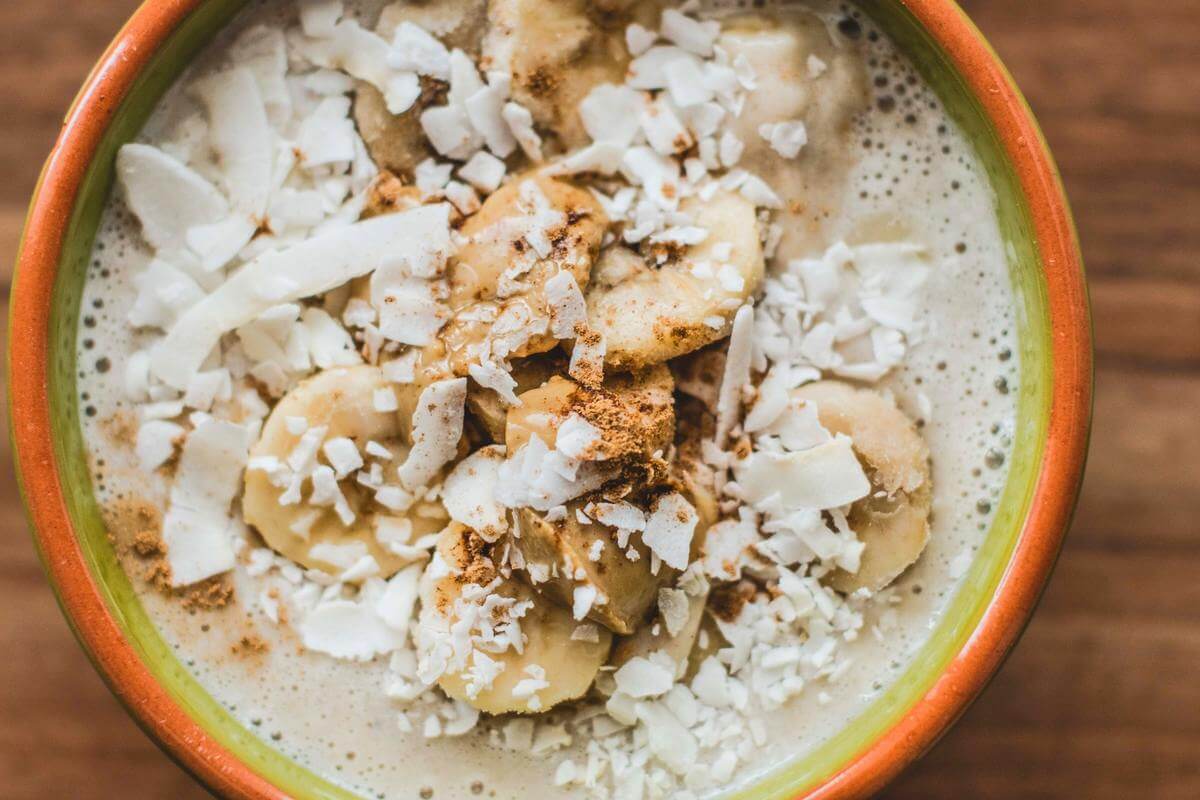We’ve all had that moment. You ticked all the items off your to do list. You smashed your workout. You ate a healthy yet satisfying dinner. Then you’re kicking back, relaxing and watching Netflix while you reflect on the success of your day, when it hits you. The craving for sugar.
There is absolutely nothing wrong with listening to your cravings once in a while. No-one should ever live a life that doesn’t include ice cream, birthday cake and the odd bowl of deliciously nostalgic cereal. But that doesn’t mean you should necessarily be eating a full-on pudding every single day.
So what do you do when those sweet tooth cravings arrive full-force? You should listen to your body, of course. We all deserve a treat for getting through the day. But instead of reaching for the ice cream tub without a second thought, consider nourishing yourself with something that is healthful and full of nutrients, as well as being sweet and satisfying.
These healthy, quick desserts still hit the spot in terms of pleasure and gratification, but they won’t make your blood sugar spike nearly as quickly as a Mars Bar would. They’re all made of simple ingredients that you probably already have in your kitchen and they’re incredibly easy to prepare - and then to eat one-handed while you text your friend about where you’re meeting for your run tomorrow morning.
Smoothie bowl

We can’t pretend that this is Ben & Jerry’s, because it’s not. What it is, however, is fresh, sweet, cold and can be eaten with a spoon.
Smoothie bowls are infinitely customisable, so this is more of a concept than a recipe. The crucial building blocks include Innermost protein powder, frozen fruit and a blender - after that it’s down to you. The protein powder adds body to the smoothie and makes it a powerhouse of nutrients, supporting your fitness goals and ensuring you’re in tip-top shape for your workout. It’s world’s away from a standard protein shake and in fact, you may end up craving all of your protein powders this way in the future.
If you’re after a creamy, nutty smoothie bowl, try blending up a frozen banana, a large spoonful of peanut butter, a couple of dates, half an avocado and a splash of milk of your choice. For something more tropical, blended frozen mango and frozen banana is life-changing when you top it with flaked coconut. For a fruity option, try a banana with frozen mixed berries, then top with fresh blueberries.
Once you’ve assembled your chosen ingredients in the blender, it’s time to mix it up, baby. It can take a few minutes of effort to get that perfect frozen creamy texture, so keep scraping down the sides until everything is incorporated.
Toppings are key here. Fresh fruit, granola, nuts and seeds, more peanut butter - the world is your smoothie bowl.
Dates stuffed with nut butter

This healthy dessert option is self-explanatory and you might think that we’re pointing out a very obvious combination. However, until you’ve actually tried eating deliciously sticky dates stuffed with thick, creamy nut butter, we don’t think you’ve truly lived.
Destone a handful of dates, ensuring that you create as small a slit as possible to remove the stone. Using a teaspoon, carefully stuff the date with a heaping dollop of nut butter. Almond is our favourite, but peanut also works well. Whether it’s smooth or crunchy is up to you. Eat. Enjoy. Come back for just one more...well, maybe two.
Chia pudding

If you're the kind of person who always chooses a creme brulee from the dessert menu when you’re out to dinner, you need something just as tasty to have on a weeknight. Enter chia pudding. The creamy texture of this pudding makes it very moreish and it doubles as a quick on-the-go breakfast.
Chia seeds are nutrient powerhouses and contain large quantities of omega-3 fatty acids and fibre, as well as being high in protein and containing several essential minerals and a range of antioxidants. They may help to reduce the risk of diabetes and heart disease, improve digestive health and increase the body’s levels of omega-3s, which benefit the heart.
This might be the easiest quick and healthy dessert on the list, as all you need to do to make chia pudding is to combine chia seeds with a liquid. For the best creamy texture, we recommend a tablespoon of chia seeds to three and a half tablespoons of the milk of your choice - coconut and almond milk are especially delicious here. Stir to combine and don’t get discouraged when a mouth-watering pudding doesn’t immediately appear in front of you.
The flavour combinations to try here are endless, but a good rule of thumb is to include a flavouring and some sweetener. A teaspoon of cocoa powder and a drizzle of honey is a great combination for a chocolate chia pudding, or you could mix in berries and chunks of fruit or even a teaspoon of nut butter.
Stir the pudding mixture very well to avoid clumps of chia seeds sticking together. Place in the fridge for at least two hours and when you return, your previously watery-looking mix will have transformed itself into a thick and creamy pudding just begging to be sprinkled with dark chocolate chips and eaten with a spoon in bed. Chia pudding keeps well for a couple of days in the fridge, so you can make a larger batch, ensuring you keep the same ratio of liquid to chia seeds, and enjoy a ready-made exceptionally healthy dessert night after night.



















